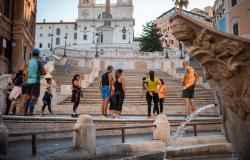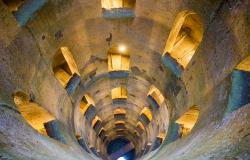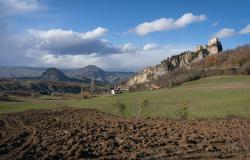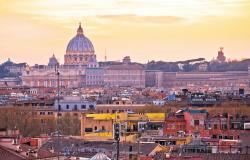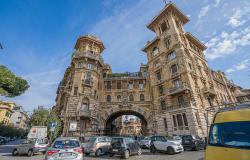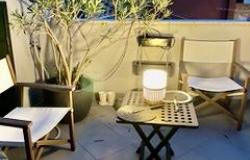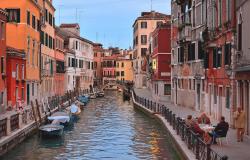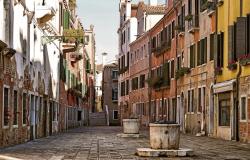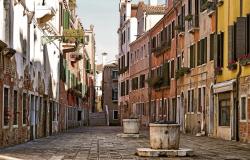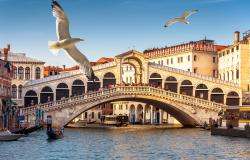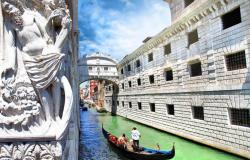Strada delle 52 gallerie and Rifugio Papa - Ph: wp.caipievedisoligo.it
For you’re interested in the Great War and/or engineering achievements then a visit to the Strada delle 52 Gallerie (Road of 52 Tunnels) could be right up your street, (no pun intended).
Situated on the massif Pasubio in Veneto, Italy, this historic collection of paths in the Dolomites demonstrates to the ingenuity and determination of the Italian 5th Engineering Regiment. Construction of this military mule-road began in March 1917 with completion taking place 11 months later.
Occupied by the Italians shortly after the start of the war, Monte Grappa and Monte Pasubio represented the last defensive position of the Venetian Plain and therefore became strategically important.

Starting point of the road of the 52 tunnels - Ph: Wikimedia Commons
After the Battle of Asagio, also known as the Trentino Offensive, an unexpected counterattack launched by the Austro-Hungarians on the Italian Front on May 15, 1916 an Italian contingent was urgently transferred from the Isonzo Front to Monte Pasubio. Occupying the southern peak, known as the Italian Tooth (Dente Italiano) and separated from the enemy based on the smaller Austrian Tooth peak by the Selletta dei Denti the area soon became a backdrop to many bloody battles right up until the end of the conflict.
Originally the Italian front line was supplied via the Strada degli Scarubbi, an 8 km road located on the northern side of the mountain’s limestone ridge which was now exposed to enemy fire meaning a new route was required, hence the construction of the 52 Tunnels, also now known as, Strada della Prima Armata, (Road of the First Army).
With the assistance of six hundred men the 6,555 metre long pathway, of which 2,280 is divided into 52 tunnels was excavated from the rock; each tunnel which is numbered measures a minimum width of 2.20 m allowing the transit of two mules and much needed supplies while still being used as defensive positions.
The road winds between Bocchetta Campiglia (1,216 m) and the Porte del Pasubio (1,934 m) crossing the southern slope of the mountain with its cavernous hollows and sheer rock faces.
Today we can enjoy this masterpiece of war and mountain engineering as it is possible to visit and walk through the tunnels, however visitors are advised to take proper trekking gear and torches. It takes approximately three-hours to navigate through the darkness and care must be taken at all times.

Final point of the Strada of the 52 Tunnels - Ph: Wikimedia Commons
The following walk is advised for anyone not experienced in mountain trekking. It is advisable to park your car at Passo Xomo; parking costs €5 per day as the free car park at Malga Campiglia is often full. Start at Bocchetta Campiglia, path number 366 which takes you through the centre of the 52 galleries. Throughout the trek you’ll find many information boards giving you background and history relating to your position within the tunnels.
When you reach the summit at Rifugio Papa (1929m) you’ll be ready for a rest and I’d advise you to bring along a small picnic lunch and enjoy the views of the Dolomites from a nearby meadow as the rest area at Rifugio Papa becomes crowded during busy periods.
Once rested take the path numbered 370 which will lead you towards the original Strade degli Scarubbi
The way back runs along path n.370, mostly on the former Strada degli Scarubbi and I’d advise you not to pass up the chance to experience tunnel number 20 which is carved into a corkscrew shaped stone tower.
Due to the terrain the 52 Gallerie are not suitable for people with limited mobility and small children may be intimidated by the large amount of dark spaces.

